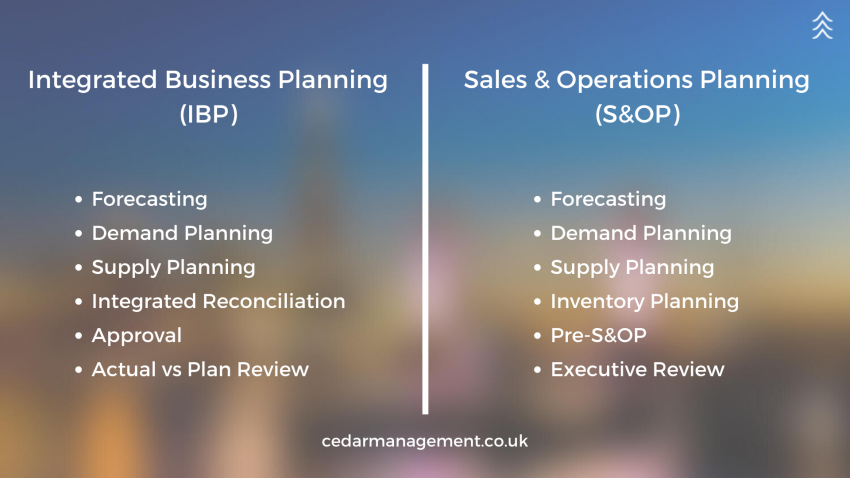The journey of business planning from ‘production planning’ to ‘Integrated Business Planning (IBP)’ involved multiple changes in methodologies, processes and decision-making frameworks. Sales and Operations Planning (S&OP) is one of the intermediate stages in this journey, while a collaborative IBP is a final stage (at least till now).
IBP and S&OP are neither exactly like each other nor opposite to each other. They have some common processes and IBP is considered an advanced level of S&OP.
Integrated business planning
IBP is a part of Enterprise Performance Measurement (EPM) system and aims at cross-functional integration to improve plan visibility and achieve business excellence. Reaching maximum coordination between departments enables organisations to make the best use of available resources.
The core components of Integrated Business Planning are:
- Forecasting
- Demand planning
- Supply planning
- Financial planning
- Operations planning
- Integrated reconciliation
- Product management
- Scenario planning
- Strategic projects
- Actual vs plan review
Sales and Operations Planning
S&OP is more about balancing demand and supply; which also includes inventory management and financial plans. S&OP provides a framework for business leaders and executives to meet and review the plans and make strategic decisions.
The components of Sales & Operations Planning are:
- Forecasting
- Demand planning
- Supply planning
- Inventory management
- Financial planning
Which one is better for you?
IBP and S&OP are based on similar principles but IBP is more effective as it incorporates financial as well as non-financial measures for efficient business planning. Integrated reconciliation is what makes IBP more efficient than S&OP; it is an ongoing process that helps in managing the business plan as well as the annual operating plan.
S&OP supports a shorter-term horizon (0-12 months) whereas IBP supports a longer-term horizon (0-36 months) and a rolling plan that allows shorter lead time, smaller inventories and better mitigation of risk. IBP helps to achieve centralised end-to-end business planning that ensures real-time sharing of information and quicker decisions.
S&OP and IBP both are integrated approaches to planning and ensure better use of resources. Both the processes improve decision-making framework, meeting discipline and strategic direction.
